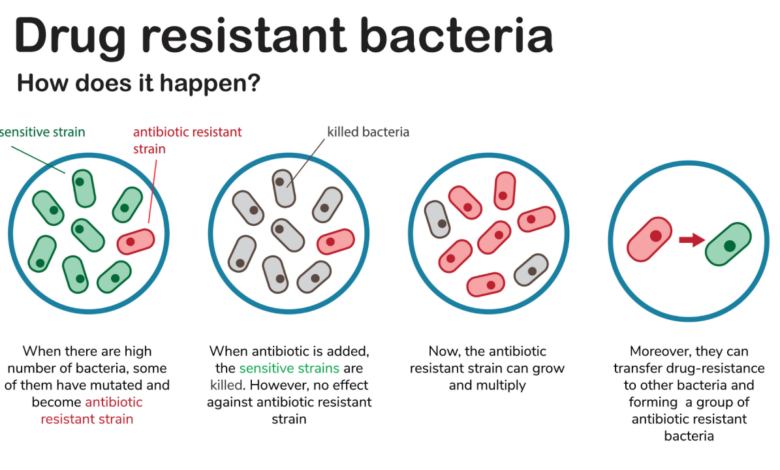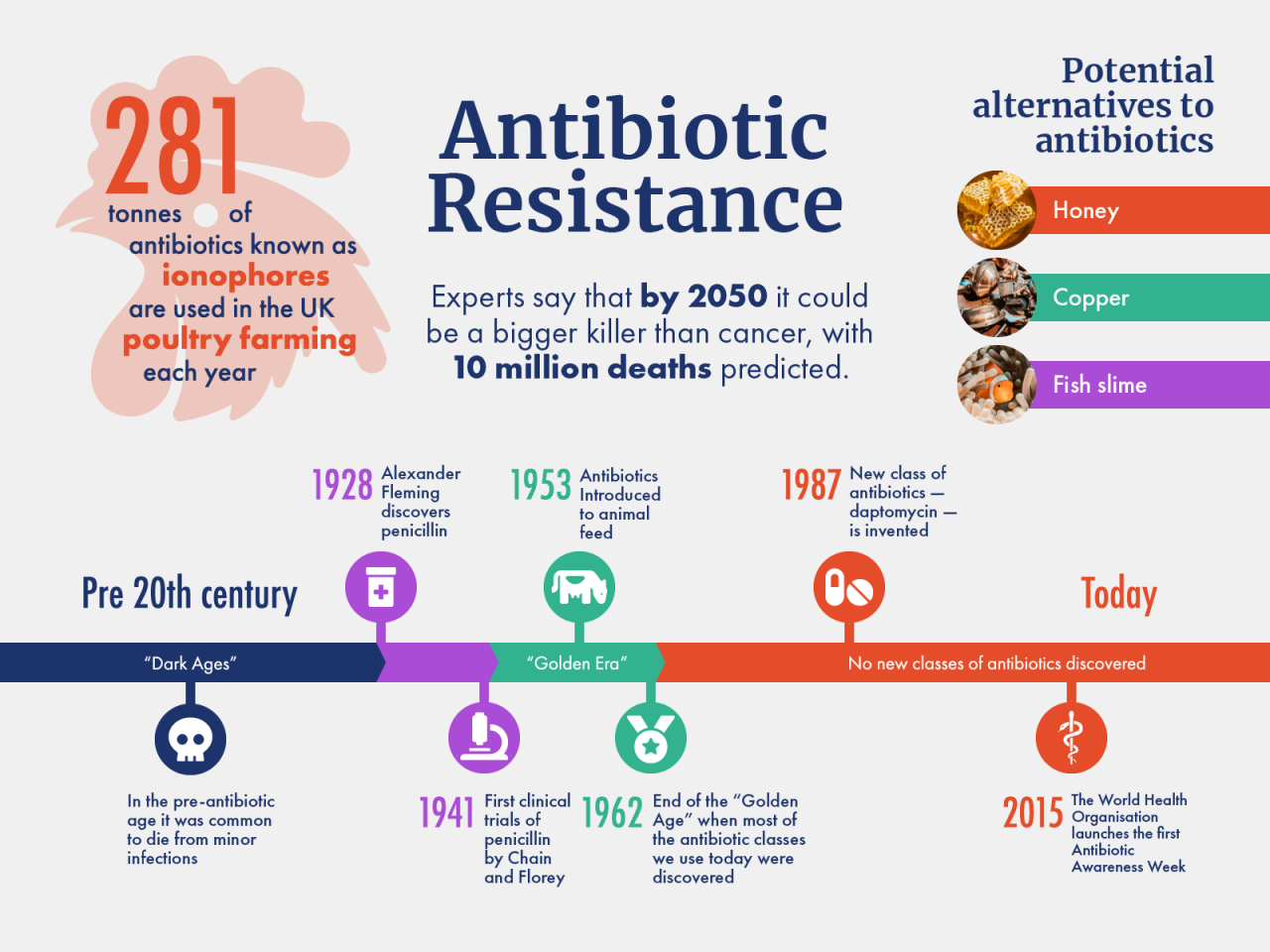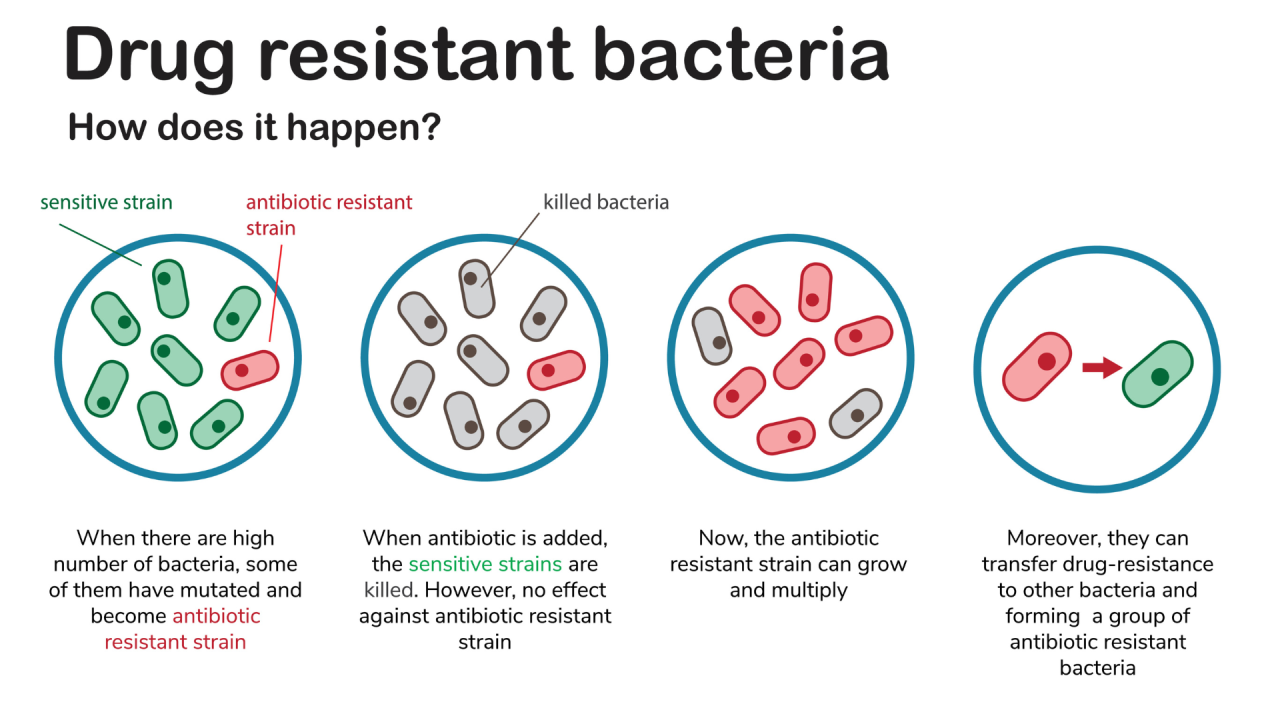
Why You Should Be Concerned About Antibiotics in Chicken
Why you should be concerned about antibiotics in chicken? It’s a question that should be on everyone’s mind. The widespread use of antibiotics in poultry farming has become a major concern for both human and animal health. While antibiotics have played a vital role in controlling diseases and increasing poultry production, their overuse has led to the emergence of antibiotic-resistant bacteria, posing a serious threat to our well-being.
The story of antibiotics in chicken farming is a complex one, with roots in the desire to produce more food for a growing population. However, as we’ve learned more about the unintended consequences of antibiotic use, it’s clear that we need to find sustainable and responsible alternatives.
This article will delve into the reasons why we should be concerned about antibiotic use in poultry, explore the potential health risks, and discuss what we can do to promote a healthier future for both chickens and humans.
The Rise of Antibiotic Use in Poultry Farming
The widespread use of antibiotics in poultry farming is a relatively recent phenomenon, with its roots dating back to the mid-20th century. This practice, driven by various factors, has significantly transformed poultry production, but has also raised concerns about its potential consequences for human health and the environment.
The Historical Context of Antibiotic Use in Poultry Production
The use of antibiotics in animal agriculture began shortly after World War II, driven by the discovery of penicillin and other antibiotics. Initially, antibiotics were primarily used to treat bacterial infections in animals, but their use quickly expanded to include growth promotion and disease prevention.
In the poultry industry, the adoption of antibiotics was particularly rapid, fueled by the increasing demand for affordable and readily available poultry products.
Reasons for the Widespread Adoption of Antibiotics in Chicken Farming
The widespread adoption of antibiotics in chicken farming was driven by several factors, including:
- Disease Prevention:Crowded conditions in industrial poultry farms make birds susceptible to a range of bacterial infections. Antibiotics were used to prevent the spread of these infections, reducing mortality rates and improving overall flock health.
- Growth Promotion:Early studies showed that low doses of antibiotics could enhance growth rates in chickens.
This was attributed to the suppression of gut bacteria that competed with the birds for nutrients, leading to better feed conversion efficiency.
- Economic Benefits:The use of antibiotics resulted in lower mortality rates, faster growth, and improved feed efficiency, all of which translated into significant economic benefits for poultry producers.
We all know antibiotics are used in chicken farming, but did you know that these drugs can disrupt your gut bacteria, leading to potential health issues? It’s a complex topic, but one that deserves attention. Understanding the connection between gut health and weight management is crucial, and that’s where learning about the 3 Hormones to Keep in Mind for Weight Loss comes in.
By maintaining a healthy gut microbiome, you can potentially improve your hormone balance and support a healthy weight. So, the next time you’re at the grocery store, remember the impact of antibiotics on your health and make informed choices about your food.
Evolution of Antibiotic Use Practices in the Poultry Industry
The use of antibiotics in poultry farming has evolved significantly over time. Initially, antibiotics were primarily administered through feed or water, but with increasing concerns about antibiotic resistance, alternative approaches have emerged. These include:
- Reduced Use:The poultry industry has adopted strategies to reduce antibiotic use, such as improving biosecurity measures, enhancing hygiene practices, and selectively breeding for disease-resistant birds.
- Antibiotic-Free Production:In response to growing consumer demand for antibiotic-free poultry products, some poultry producers have transitioned to antibiotic-free production systems.
- Alternative Approaches:Researchers are exploring alternative strategies to disease prevention and growth promotion, such as the use of probiotics, prebiotics, and immunomodulators.
The Health Risks of Antibiotic-Resistant Bacteria: Why You Should Be Concerned About Antibiotics In Chicken

The widespread use of antibiotics in poultry farming has raised serious concerns about the emergence of antibiotic-resistant bacteria. These resistant bacteria can pose significant health risks to humans, making infections more difficult to treat and potentially leading to severe consequences.
It’s not just about the taste – the overuse of antibiotics in chicken production is a serious concern for our health. These drugs can lead to antibiotic resistance, making infections harder to treat. If you’re looking for healthier options, consider incorporating more fiber into your diet! Check out this guide for High Fiber Meals for Weight Loss: A Guide to Feeling Full and Slim to learn about delicious and nutritious alternatives.
Making informed choices about what we eat is crucial for both our individual well-being and the health of our planet.
Antibiotic Resistance: A Growing Threat
Antibiotic resistance occurs when bacteria develop the ability to survive and multiply despite exposure to antibiotics. This happens through various mechanisms, including mutations in bacterial genes and the acquisition of resistance genes from other bacteria. When bacteria become resistant to antibiotics, infections become harder to treat, leading to longer hospital stays, higher medical costs, and increased mortality rates.
Examples of Antibiotic-Resistant Bacteria in Poultry
Several antibiotic-resistant bacteria commonly found in poultry can pose threats to human health. These include:
- Salmonella: A common foodborne pathogen found in poultry, Salmonellacan cause severe food poisoning. Antibiotic-resistant Salmonellastrains are increasingly reported, making infections more challenging to treat.
- Campylobacter: Another prevalent foodborne pathogen in poultry, Campylobactercan cause diarrhea, abdominal cramps, and fever. Antibiotic resistance in Campylobacterstrains is also on the rise, posing a significant health risk.
- Escherichia coli (E. coli): Some strains of E. colican cause urinary tract infections, diarrhea, and other illnesses. Antibiotic-resistant E. colistrains have become increasingly common, making these infections more difficult to manage.
Mechanisms of Antibiotic Resistance Development and Spread
Antibiotic resistance develops and spreads through various mechanisms, including:
- Mutations: Bacteria can undergo spontaneous mutations in their genes, which may confer resistance to antibiotics. These mutations can occur randomly or be induced by exposure to antibiotics.
- Horizontal Gene Transfer: Bacteria can share genetic material, including resistance genes, through various mechanisms like conjugation, transformation, and transduction. This allows resistance genes to spread rapidly among bacterial populations.
- Selective Pressure: The overuse and misuse of antibiotics create a selective pressure that favors the survival and growth of resistant bacteria. When antibiotics are used frequently, susceptible bacteria are killed, while resistant bacteria survive and multiply, leading to an increase in their prevalence.
The Impact of Antibiotic Use on Chicken Health
The overuse of antibiotics in poultry farming has unintended consequences for the health of chickens. While antibiotics can be helpful in treating infections, their routine use can negatively impact chicken health and create a breeding ground for antibiotic-resistant bacteria.
The Negative Effects of Antibiotic Use on Chicken Health
Antibiotics can disrupt the delicate balance of the chicken’s gut microbiome, leading to various health problems. The gut microbiome is a complex ecosystem of bacteria, fungi, and viruses that play a crucial role in digestion, immunity, and overall health.
- Compromised Immune System:Antibiotics can weaken the chicken’s immune system by disrupting the gut microbiome, making them more susceptible to diseases. This is because the gut microbiome is essential for developing a robust immune response. A healthy microbiome helps train the immune system to distinguish between harmful and beneficial bacteria, enabling it to effectively fight infections.
- Increased Susceptibility to Diseases:When the gut microbiome is disrupted, the chicken becomes more vulnerable to infections caused by harmful bacteria, parasites, and viruses. These pathogens can easily invade the weakened immune system, leading to various diseases, such as Salmonella, E. coli, and Campylobacter infections.
- Gut Microbiome Disruption:Antibiotics can kill off beneficial bacteria in the gut, leading to an imbalance in the microbiome. This imbalance can disrupt the normal functioning of the digestive system, leading to problems like diarrhea, poor nutrient absorption, and compromised growth.
The Link Between Antibiotic Use and Antibiotic-Resistant Bacteria, Why you should be concerned about antibiotics in chicken
The widespread use of antibiotics in poultry farming is a significant driver of antibiotic resistance. When antibiotics are used routinely, bacteria can develop resistance mechanisms to survive and thrive in the presence of these drugs.
“Antibiotic resistance is a global health crisis, and the overuse of antibiotics in agriculture is a major contributor to this problem.”
World Health Organization
These resistant bacteria can spread from chickens to humans through contaminated meat, eggs, and the environment, posing a serious threat to public health.
The Role of Consumers in Reducing Antibiotic Use

The power to change the way antibiotics are used in the poultry industry lies, in part, with consumers. By making informed choices and advocating for change, we can significantly impact the way chickens are raised and the health of our planet.
You might be surprised to learn that the antibiotics pumped into our chicken supply can actually affect your weight. These drugs disrupt our gut bacteria, which plays a huge role in digestion and metabolism. To take control of your health and potentially shed some pounds, check out 10 Simple Changes That Lead to Weight Loss for some easy tips.
Making mindful choices about your food, like opting for antibiotic-free chicken, can make a big difference in the long run.
Choosing Antibiotic-Free Chicken
Consumers have the power to directly influence the poultry industry by choosing antibiotic-free chicken. This simple act sends a clear message to producers that there is a market demand for poultry raised without routine antibiotic use. Choosing antibiotic-free chicken offers several benefits:
Benefits of Choosing Antibiotic-Free Chicken
- Health Benefits:Choosing antibiotic-free chicken reduces the risk of consuming antibiotic-resistant bacteria, which can lead to infections that are difficult to treat. This is especially important for individuals with weakened immune systems, children, and pregnant women.
- Environmental Impact:Antibiotic use in agriculture contributes to the growing problem of antibiotic resistance in the environment. Choosing antibiotic-free chicken supports sustainable farming practices that minimize the environmental impact of antibiotic use.
- Ethical Considerations:Many consumers believe that raising animals without routine antibiotic use is more ethical. It promotes animal welfare by reducing the use of drugs that can compromise animal health and well-being.
Supporting Sustainable Farming Practices
Beyond choosing antibiotic-free chicken, consumers can support sustainable farming practices that reduce the need for antibiotics. This includes supporting farmers who:
- Focus on animal welfare:Providing chickens with adequate space, proper nutrition, and stress-free environments can strengthen their immune systems and reduce the need for antibiotics.
- Implement biosecurity measures:This involves measures to prevent the spread of diseases, such as proper hygiene practices, vaccination programs, and isolation of sick birds.
- Employ preventative measures:This includes practices like rotating pastures, controlling pests, and maintaining clean water sources to reduce the risk of disease outbreaks.
Advocating for Policy Changes
Consumer awareness and advocacy can drive policy changes that limit antibiotic use in the poultry industry. This can include:
- Supporting legislation:Consumers can advocate for legislation that restricts the use of antibiotics for growth promotion and disease prevention in poultry.
- Engaging with policymakers:Contacting elected officials and expressing concerns about antibiotic use in poultry farming can influence policy decisions.
- Supporting organizations:Supporting organizations that work to promote responsible antibiotic use and sustainable farming practices can amplify the message for change.
Alternatives to Antibiotics in Poultry Farming
The widespread use of antibiotics in poultry farming has raised concerns about the emergence of antibiotic-resistant bacteria. This has led to a growing interest in exploring alternative approaches to disease prevention and growth promotion in chickens without relying on antibiotics.
Natural Feed Additives
Natural feed additives offer a promising alternative to antibiotics for improving chicken health and performance. These additives can enhance gut health, boost immunity, and promote growth without the risks associated with antibiotic use.
- Prebiotics: Prebiotics are non-digestible food ingredients that promote the growth of beneficial bacteria in the gut. Examples include fructans, mannan oligosaccharides (MOS), and galacto-oligosaccharides (GOS). These prebiotics help to maintain a healthy gut microbiome, which is essential for optimal digestion, nutrient absorption, and immune function.
- Probiotics: Probiotics are live microorganisms that, when administered in adequate amounts, provide health benefits to the host. They can help to restore the balance of the gut microbiome, which can be disrupted by stress, disease, or antibiotic use. Common probiotic strains used in poultry include Lactobacillus, Bacillus, and Saccharomyces.
- Essential Oils: Certain essential oils, such as oregano, thyme, and cinnamon, have antimicrobial properties that can help to control pathogens in the gut. They can also enhance feed palatability and improve growth performance.
- Yeast Extracts: Yeast extracts are rich in B vitamins, amino acids, and other nutrients that can enhance feed quality and promote growth.
They can also stimulate the immune system and improve gut health.
Probiotics
Probiotics are live microorganisms that, when administered in adequate amounts, provide health benefits to the host. They can help to restore the balance of the gut microbiome, which can be disrupted by stress, disease, or antibiotic use. Common probiotic strains used in poultry include Lactobacillus, Bacillus, and Saccharomyces.
- Improved Digestion and Nutrient Absorption: Probiotics can enhance the digestion and absorption of nutrients by promoting the growth of beneficial bacteria in the gut. These bacteria produce enzymes that break down food and improve nutrient availability.
- Enhanced Immune Function: Probiotics can stimulate the immune system by increasing the production of antibodies and immune cells.
They can also help to reduce inflammation and protect against pathogens.
- Reduced Pathogen Colonization: Probiotics can compete with pathogenic bacteria for space and nutrients in the gut, reducing their ability to colonize and cause disease.
Biosecurity Measures
Biosecurity measures are crucial for preventing the spread of diseases in poultry flocks. These measures aim to minimize the risk of introducing pathogens into the farm and to prevent their transmission within the flock.
- Strict Hygiene Practices: Implementing strict hygiene practices, such as regular cleaning and disinfection of facilities, equipment, and vehicles, is essential for reducing the risk of pathogen transmission.
- Isolation and Quarantine: Newly introduced birds should be isolated and quarantined for a period of time to ensure they are not carrying any diseases.
- Vaccination: Vaccination can provide immunity against specific diseases, reducing the need for antibiotics.
- Pest Control: Controlling pests, such as rodents and insects, can help to prevent the transmission of diseases.
Challenges and Benefits
Transitioning to antibiotic-free poultry production presents both challenges and benefits.
- Challenges:
- Increased Costs: Implementing alternative approaches to disease prevention and growth promotion can be more expensive than using antibiotics.
- Potential for Reduced Productivity: In some cases, antibiotic-free production may result in slightly lower productivity, such as reduced growth rates or egg production.
- Technical Expertise: Managing antibiotic-free poultry production requires specialized knowledge and skills, particularly in areas like biosecurity and nutrition.
- Benefits:
- Reduced Risk of Antibiotic Resistance: Eliminating antibiotic use in poultry production reduces the selection pressure for antibiotic-resistant bacteria.
- Improved Animal Welfare: Avoiding antibiotics can promote animal welfare by reducing the risk of side effects and promoting gut health.
- Consumer Demand: There is growing consumer demand for antibiotic-free poultry products, creating a market opportunity for producers.
Last Point
The overuse of antibiotics in poultry farming is a serious issue with far-reaching consequences. While antibiotics have played a role in disease control, the emergence of antibiotic-resistant bacteria poses a significant threat to human health. By understanding the risks associated with antibiotic use and choosing antibiotic-free chicken whenever possible, we can contribute to a more sustainable and healthy food system.
It’s time to re-evaluate our relationship with antibiotics and prioritize a future where both chickens and humans can thrive.

